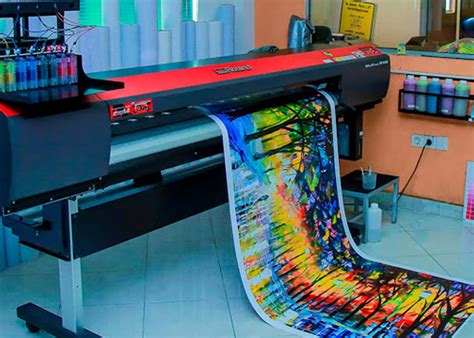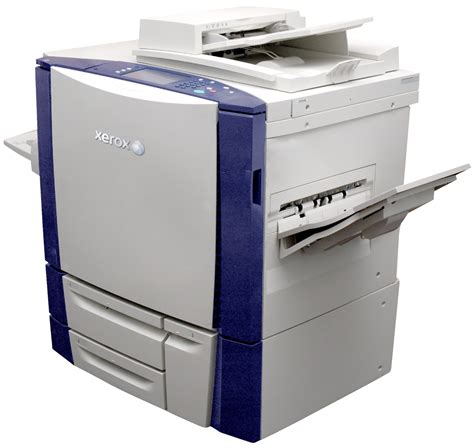Digital Printer

The world of digital printing has undergone significant transformations over the years, driven by technological advancements and the ever-evolving needs of the market. Today, digital printers are an indispensable tool in various industries, including graphics, textiles, and packaging. With their ability to produce high-quality prints at rapid speeds, digital printers have revolutionized the way businesses operate, enabling them to respond quickly to changing market demands and customer preferences.
The history of digital printing dates back to the 1960s, when the first digital printing technologies were developed. However, it wasn't until the 1990s that digital printing began to gain widespread acceptance, with the introduction of inkjet and laser printing technologies. Since then, digital printing has continued to evolve, with advancements in areas such as print resolution, color gamut, and substrate handling. Modern digital printers are capable of producing prints with resolutions of up to 1200 dpi, making them ideal for applications where high image quality is critical.
Key Points
- Digital printers offer high-speed printing capabilities, making them suitable for large-scale production environments.
- Modern digital printers support a wide range of substrates, including paper, plastics, and textiles.
- Digital printing technologies, such as inkjet and laser printing, offer high print resolutions and vibrant color reproduction.
- Digital printers are highly versatile, with applications in various industries, including graphics, packaging, and textiles.
- The cost of digital printing has decreased significantly over the years, making it more accessible to businesses and individuals.
Digital Printer Technologies

Digital printers employ various technologies to produce high-quality prints. Inkjet printing, for example, uses a printhead to deposit tiny droplets of ink onto the substrate, creating the desired image. Laser printing, on the other hand, uses a laser beam to charge a drum, which attracts toner particles to create the image. Other digital printing technologies include electrostatic printing, thermal printing, and dot matrix printing. Each technology has its strengths and weaknesses, and the choice of technology depends on the specific application and substrate being used.
Inkjet Printing
Inkjet printing is one of the most common digital printing technologies used today. It is known for its high print quality, flexibility, and versatility. Inkjet printers use a printhead to deposit ink droplets onto the substrate, creating the desired image. The printhead is typically made up of a series of nozzles, which are controlled by a computer to create the image. Inkjet printing is widely used in various industries, including graphics, textiles, and packaging.
| Printing Technology | Print Resolution | Color Gamut |
|---|---|---|
| Inkjet Printing | Up to 1200 dpi | Wide color gamut with vibrant colors |
| Laser Printing | Up to 2400 dpi | Narrow color gamut with accurate color reproduction |
| Electrostatic Printing | Up to 600 dpi | Narrow color gamut with high-speed printing capabilities |

Digital Printer Applications

Digital printers have a wide range of applications across various industries. In the graphics industry, digital printers are used to produce high-quality prints for signage, banners, and displays. In the packaging industry, digital printers are used to produce labels, packaging materials, and corrugated boxes. In the textiles industry, digital printers are used to produce printed fabrics for clothing, upholstery, and other applications.
Packaging Industry
The packaging industry is one of the largest users of digital printers. Digital printers are used to produce labels, packaging materials, and corrugated boxes. The use of digital printers in the packaging industry has enabled businesses to respond quickly to changing market demands and customer preferences. With digital printers, businesses can produce high-quality prints with variable data, such as barcodes, serial numbers, and product information.
In conclusion, digital printers have revolutionized the way businesses operate, enabling them to respond quickly to changing market demands and customer preferences. With their high-speed printing capabilities, versatility, and high print quality, digital printers are an indispensable tool in various industries. As technology continues to evolve, we can expect to see even more advancements in digital printing, enabling businesses to produce high-quality prints with greater efficiency and accuracy.
What is the difference between inkjet and laser printing?
+Inkjet printing uses a printhead to deposit ink droplets onto the substrate, while laser printing uses a laser beam to charge a drum, which attracts toner particles to create the image.
What are the advantages of digital printing?
+The advantages of digital printing include high-speed printing capabilities, versatility, and high print quality. Digital printing also enables businesses to respond quickly to changing market demands and customer preferences.
What are the applications of digital printing?
+Digital printing has a wide range of applications across various industries, including graphics, packaging, and textiles. Digital printers are used to produce high-quality prints for signage, banners, displays, labels, packaging materials, and corrugated boxes.



